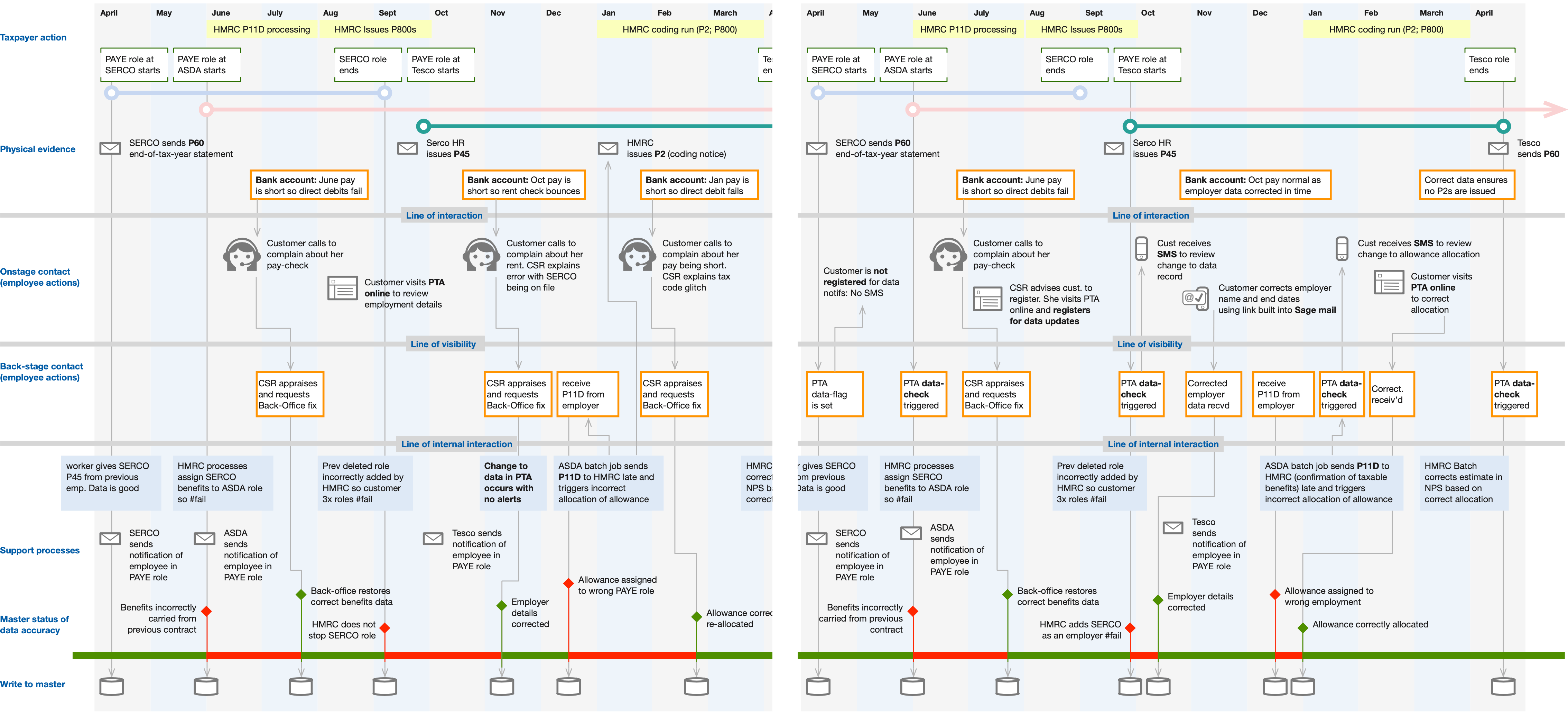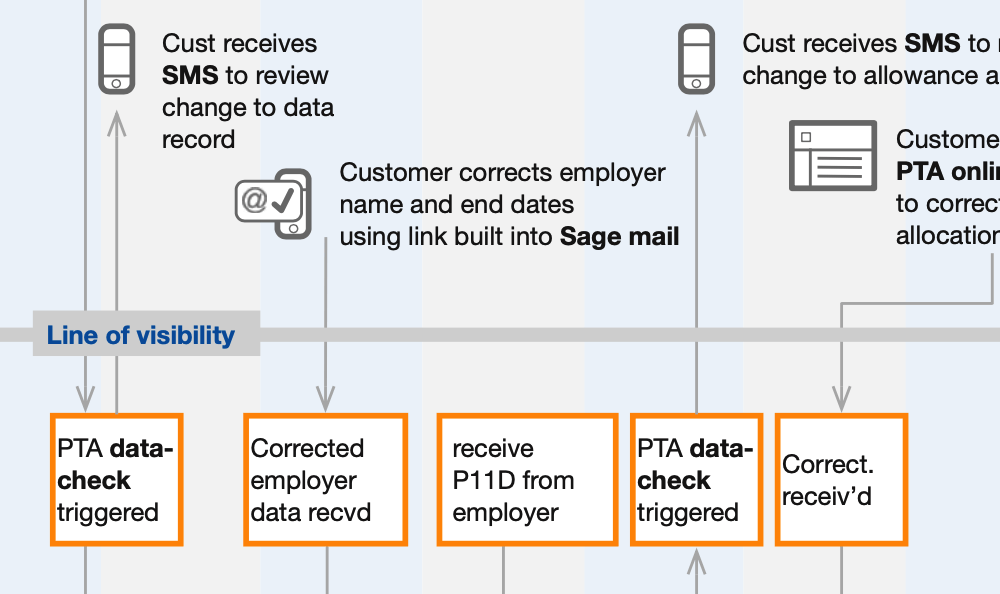- Vision realization Pioneered a phase of visioning work that culminated in a clear, simplified purpose statement focused on meeting user needs while building citizen trust.
- Strategic clarity Transformed a ‘portalised’ dumping ground into a service with a clear, articulate vision and strategic path through inclusive workshops and strategy sessions.
- Blueprints to action Transitioned vision into actionable plans by expressing as-is/to-be gaps in detailed service blueprints and co-authoring the next phase briefing.
The challenge
Addressing the existential crisis of HMRC’s “Personal Tax Account” service which, over time, devolved into an unstructured repository for various tax-related communications and information, with no clear problem definition or purpose in serving specific user needs.

My Role
Engaging as a Service Designer, I navigated through a complex web of stakeholders and teams, instigating clarity and unity through strategic workshops, and translating the refined vision into actionable service blueprints and phase briefings.
How I Did It
By spearheading strategy workshops and employing design tools focused on problem space, purpose definition, and vision1, I forged a new, simplified purpose statement. The subsequently developed service blueprints and coordinated next-phase briefings bridged the gap between strategic vision and tangible action across technical, business, and delivery dimensions.
The project in a bit more detail
The HMRC “Personal Tax Account” was suffering from a number of existential challenges. Owners and managers could not identify exactly what problem the service solved, nor could they pinpoint any specific needs it addressed. Over time, it had become a portalised dumping ground for elements of tax code communications, PAYE, and pensions information display. This lack of clear purpose led the leadership team to kick off a phase of visioning work and I was recruited to lead this exploration.
Action and outcomes
I was engaged as a service designer working across teams in the Newcastle Digital Delivery Centre. In order to bring together a large and complex network of stakeholders, I created design tools and led teams through strategy workshops: problem space; purpose definition; and vision canvas. These workshops resulted in greater clarity and a much simpler purpose statement centred on reducing costs while building citizen trust.
With the vision successfully in place, I expressed the as-is/to-be gaps in a series of service blueprints and wrote the next phase briefing with technical architects, business and delivery teams.
Activities
- Stakeholder management
- Strategy and planning
- Workshop facilitation
- As-is/to-be gap analysis
- Team coaching and knowledge transfer
- Service blueprinting
-
I designed the Vision Canvas (review longer article) as an extension to the standard business model canvas taking into account the different range of pressures and influences a service experiences in public sector. The canvas introduces a #oneTeamGov approach, planning for inclusion of policy constraints and identifying opportunities to share findings to help other organisations acting in the same ecosystem. ↩
Can I help you solve a similar problem? dug@goodlookslikethis.com
